I got a great question from Douglas after he signed up for our Praxis counter-ambush and counter-assault training…
“What’s the best place, with the shortest draw time to conceal my pistol?”
It’s a great question, but it’s a little more complicated than it may seem.
As an example, the best place I’ve found to carry a pistol with the shortest draw time is in the front pocket of a jacket with my hand holding the pistol…shooting through my jacket…but a pistol in a jacket pocket usually isn’t a good idea because of the tendency to flop around and/or fall out. It’s hella-fast and concealed well, but in the real world, there are other factors in play.
Second fastest is a hammerless revolver in a pocket holster in a loose front pants pocket…again, with my hand innocently and discretely holding the revolver. Great option when standing…not so much when sitting. Especially with a seatbelt on.
From there, it depends on your body composition, the clothes you’re wearing, activity level, whether you’re sitting or standing, wearing a seatbelt or not, and other factors.
In general, for speed from concealment, appendix carry is quickest and times increase as you get further away from appendix position.
But, appendix may not be the “best” position for you to carry in just because of speed.
As an example, the vast majority of the time, I carry on my strong side hip. When I know I’m going to be bending over a lot, I’ll carry a hammerless revolver in an appendix holster. When I’m riding a bike, I’ll oftentimes wear a fanny pack holster or carry in a backpack/camelbak in a holster.
When I need to wear a tucked-in shirt and look sharp, I might wear a compression shirt holster or ankle holster, but my most common solution is one of the following:
- I’ll carry a J-frame 8-shot .22 in a Phlster Enigma AND I’ll carry a North American Arms .22 revolver with a “holster grip” in my left front pocket. (The NAA .22 is kind of a “fud” gun, but I’ve got 2 of them, have shot them enough to know their limits, and find them to be slightly better than not having a gun and a LOT quicker than getting to my J-frame in a belly band that’s buried behind 2 tucked in shirts.)
- I’ll carry in the integrated holster in my King Of The Mountain “Streetfighter” Wool+Kevlar coat…knowing that it may end up being off-body carry that I need to be responsible for. (Let me know if you want one by commenting below and I’ll see if I can convince King to create a discount code for me)
Each of these options is “best” for speed and concealment under some, but not all conditions. Most of the tucked in options are what I’d consider to be “least bad” options rather than “best.”
If I were to suggest a single way to carry initially, it would be on your strong side hip.
Why? Because the draw is almost identical for an in waist band holster as well as an outside the waistband holster.
You can go to ANY class and shoot from a strong-side hip holster…but there are several where you can’t draw from an appendix holster, cross draw, or behind the hip.
You can go compete in an IDPA, USPSA, or 3-gun match with a strong side hip holster, but appendix, cross-draw, and behind the hip may have restrictions.
From there, you can experiment with carry methods that work better for your lifestyle (like off-body carry), ways that are easier for YOU to conceal YOUR firearm on YOUR body, and ways that are quicker for you. A SEAL who I used to work with had injuries that made it prohibitively painful to carry on his waist and he adopted sholder-bag carry as a result.
Two rules of thumb to keep in mind…
First is, the reason to keep pushing speed on your draw stroke isn’t to shave 100ths of a second…it’s because the combination of speed+accuracy+consistency is an objective way to measure skill level and whether or not the skill is coded to the parts of the brain that you’ll have access to under stress.
Second, keep in mind that while shaving 100ths and 10ths of a second off of your draw stroke is important, the ability to visually identify threats sooner and tie that realization to your draw stroke can cut several seconds off of your real-world draw stroke time.
Regardless of which way you carry, I want to encourage you to watch the replay of the training session that Douglas signed up for >HERE<.
Here’s why it’s so vital that you do…
Performance degrades significantly the more the real-world situation is different than how the skill was trained. Factors include stance, stress level, visual complexity, lighting, balance, movement, time constraints, angles, and novelty of the situation.
Current training is done in blocks and the user has to bolt the blocks together under stress. An example is shooting standards where the student is standing flat footed on a well lit range with a perfect stance, shooting 1 paper target with generous time constraints.
Like this:
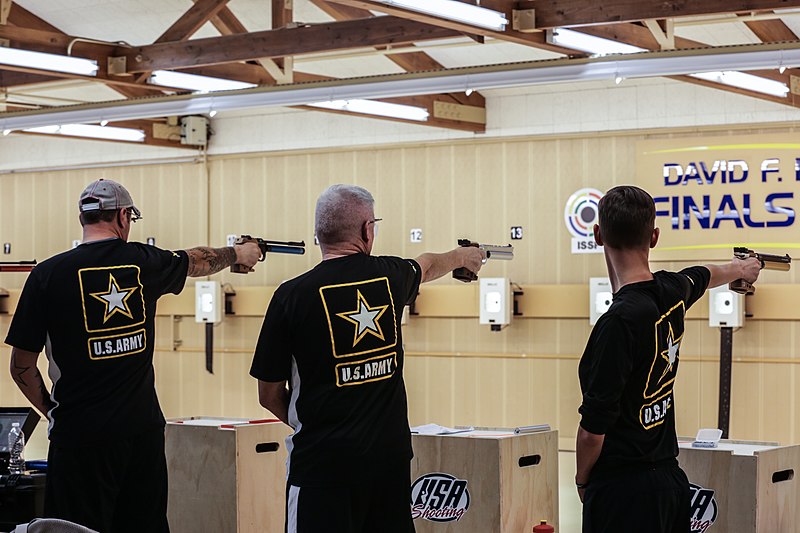
Or this:

This creates a fragile technique.
>This training helps you build resilient technique.<
That same student is expected to be able to shoot the same on a moving target that’s shooting at them in poor lighting while sprinting laterally over uneven ground to cover with innocent people in the area.
Each factor that’s different in reality than it was in training adds a lag and a drop in performance as the brain attempts to bolt disparate skills together.
Praxis builds the individual skills and then combines them over time to create resilient technique that can be executed at a high level under stress, even under horrible, real-world conditions.

Current multi-day training is done in a way that codes to parts of the brain that we won’t have access to under stress, namely the hippocampus
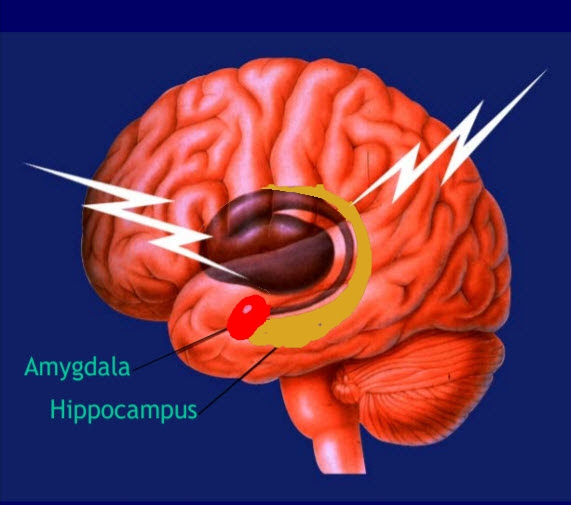
Under stress, blood/glucose is diverted from the hippocampus to the amygdala and head knowledge disappears.
Here’s an excerpt from a recent Force Science Institute study published in the journal, Behavior Analysis In Practice illustrating how that plays out:

Praxis uses cutting edge brain science to help you code complex motor skills to the right parts of the brain for high stress performance, namely the motor cortex, cerebellum (error correction) , and basil ganglia (planning complex motor movements).
Traditional training methods are not able to accomplish this efficiently because they overload short term memory with more information than it is able to consolidate and transfer into long term memory in a single setting. The student may retain the head knowledge, but not the skill.
In the real world, the need to move offline and use a firearm is most often triggered by a visual stimulus that requires rapid and accurate scanning and visual processing and decision making tied to a complex motor skill.
Training most often uses static targets where the status of the threat does not change. In addition, most often, the “go” signal is an audible beep.
Praxis integrates scanning, rapidly shifting focus, and accelerated decision making based on visual input and ties it directly to meaningful defensive action, whether it’s moving offline, drawing and engaging with a firearm, or both.
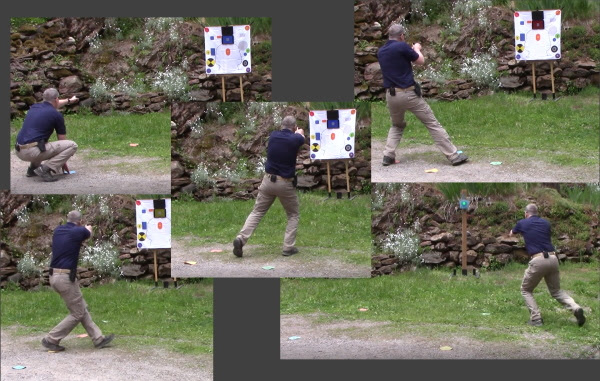
Performance under stress is a combination of inoculating complex motor skills to stress through repetition under increasingly stressful conditions AND stress modulation in the brain.
Traditional training tends to under-stress or over-stress the student and does not integrate stress modulation techniques into training.
Praxis will teach you how to dial in your stress level for optimal training. Too little stress leads to inactivation of the cerebellum, a wandering mind, and very little skill building…too high of stress
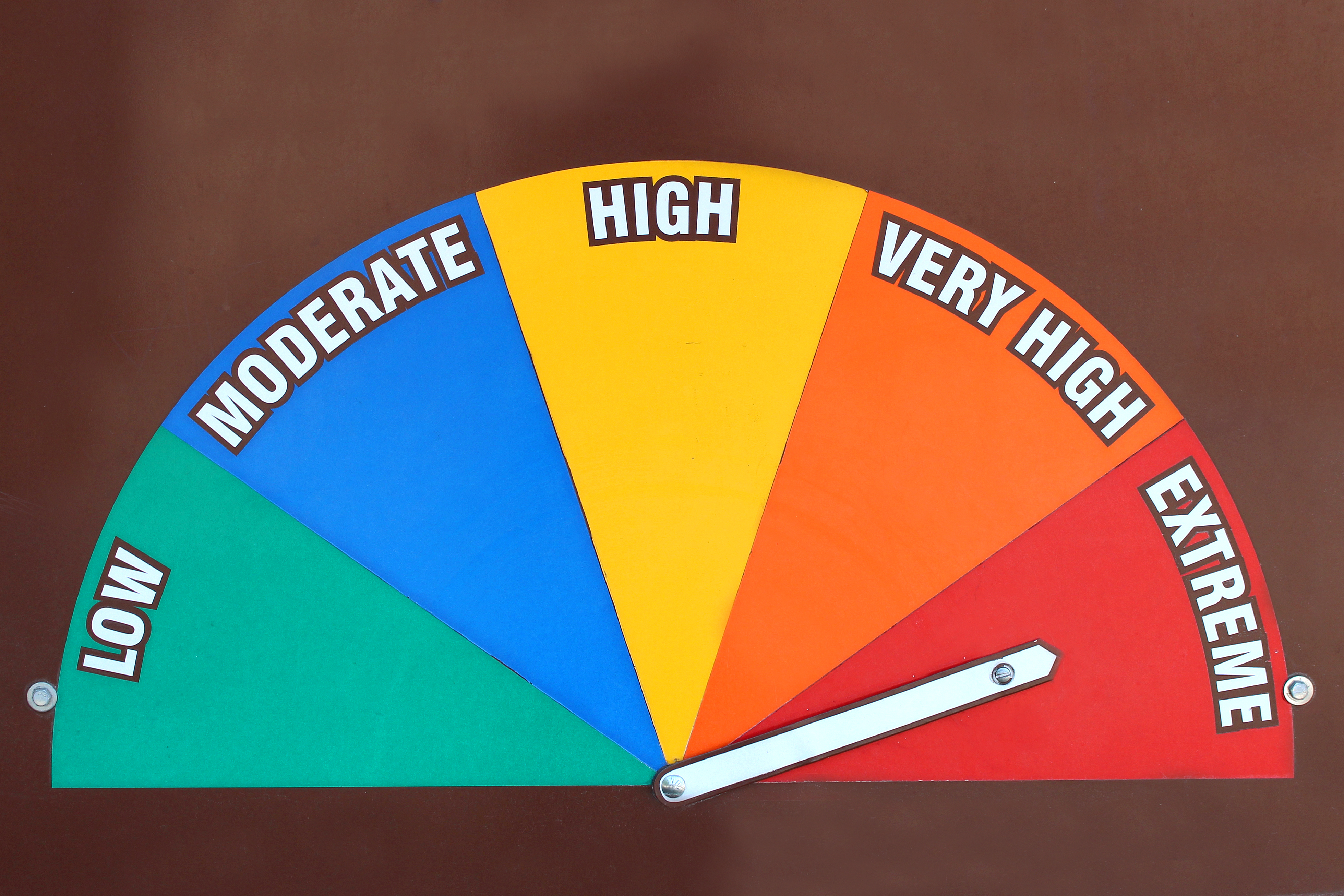
Risk indicator dash board
reduces acetyl choline increases cortisol, and decreases learning speed. But, with Praxis, you’ll learn a scientific approach to using just the right level of stress in training to optimize learning speed.
In addition, you’ll learn stress modulation techniques to be able to blunt the adrenal response and stay in a peak performance zone when others are freaking out.
We live in a time where speed and accuracy demands are on the rise, but training time and training budgets are being taxed. Traditional training methods are struggling to keep up.
The 5 F’s of Praxis (Front end loaded, Fast, Frequent, Four percent, fused, and a 6th…Fun) will allow you to build skill faster, while spending dramatically less time and money to build these skills.
In the same time (or less) that others are spending to be mediocre at flat footed shooting, you’ll be excelling at 360 degree dynamic shooting with odd angles, multiple threats, and discernment training.
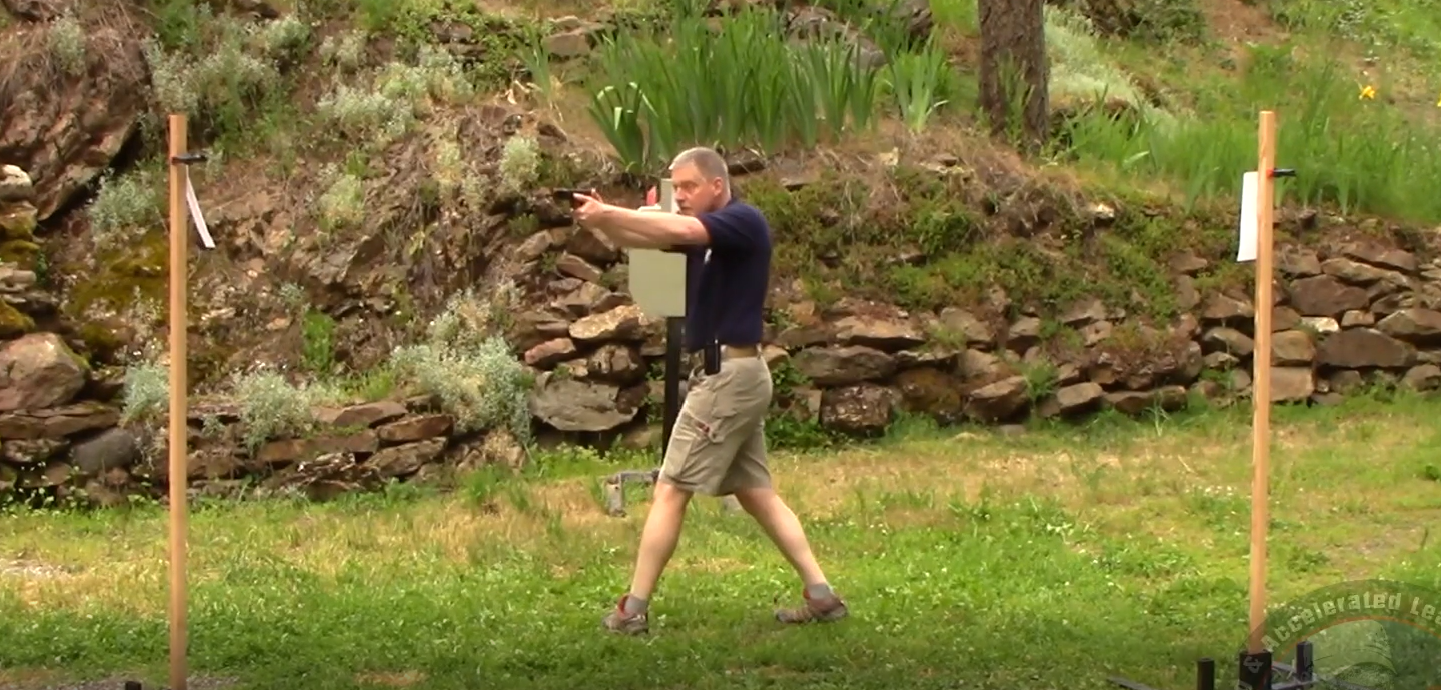
What that means is that the time saved on gunfight training can be used on situational awareness, de-escalation, empty hands, and other training.
Until Praxis, shooters either had the ability to perform like this or they didn’t.
>With THIS TRAINING, there’s finally a shortcut-to-greatness with a pistol.<
And the only way to go from not having the skills to having the skills was 10s of thousands of reps over hundreds of hours per year. Even then, it wasn’t guaranteed if the shooter had underlying balance, vision, or hand-eye coordination issues.
Using cutting edge brain science, Praxis completely changes the math and will show you how to go from being a static, flat footed, paper-punching shooter to being a faster, more accurate, dynamic, thinking shooter over the next 6 weeks…a few minutes at a time, a few times a week using simple, fun drills you can do in your own home.
We’ll do it by upregulating the vision, balance, and hand-eye coordination centers of the brain…first individually, then integrated together, and finally integrated together with firearms fundamentals.
No other training can deliver these results because no other training uses this process.
Get ready to amaze your friends, your family, and yourself…take the next step by signing up for our free training >HERE<
11 Comments
chris james
December 9, 2022The King of the Mountain “Street Fighter” Jacket sounds great, Of course besides being great in clothing it is great in price. Such is life’s ironies.’
On a different subject; Dues any one make body armor for below the waste? Not necessarily for a guys junk but more to protect the upper thigh and hip area where it is also impossible to apply a tourniquet.
I live in a rural area alone so it could be awhile before help arrives.
Finally What airsoft AR can be used for striking as while as shooting in home defense training.
Great products ideas they make practice more interesting and fun. I use them with my mantis and LASR system. A fun way to get innovate with traing
Ox
December 12, 2022King’s stuff is awesome. At a minimum, they’re a lifetime investment. For many, they’re multi-generational.
There’s no other coat I own that’s so comfortable across such a wide range of temperatures and conditions.
There are groin cut body armor plates, although I’m not buying one anytime soon even though I also live in a rural area. The hard plates are cumbersome and the soft body armor isn’t made to effectively absorb hits within 2″ of the edge. Furthermore, I like a high-cut fit that sacrifices belly-button coverage in exchange for being able to sit comfortably and get to my gear easily.
The only airsoft AR that I’d recommend is from https://TrainWithChaos.com but they only sell to MIL/LE right now.
The T4E ARs that shoot .43 paintball/powderball/pepperball/rubber ball can be used for striking. If you want one, I believe I have 3 HK416s in stock.
rod vanzeller
December 9, 20223 model 43 c smith, one in the pocket, one on side holster, one on inside shirt holster, all at the same time, this should cover most situations.
8 ounces each no weight concerns.
Ox
December 12, 2022That gives you 3 New York reloads 🙂
Troy Faircloth
December 16, 2021I would live a deal on a “Streetfighter” coat!
Thanks for all your insight.
Ox
December 16, 2021Cool. I contacted King earlier and am waiting to hear back.
KG
December 20, 2021Sounds like an awesome coat. Since I’m in a suit part of my week I’d love to check out the fit and cut of the coat. Any word back from King yet?
Ox
December 21, 2021It is an awesome coat. I just reached out to King again.
Daniel S
December 16, 2021I carry strong side hip. Gun doesnt sig into my gut, and it’s the same motion as reaching for a wallet in the back pocket. I shoot IDPA, and they dont allow appendix carry. So I get more practice/ training from hip carry.
James Gover
December 16, 2021Nobody likes crossdraw, but I think it is under-rated. J-frame in open holster clipped inside the belt, above the left pocket.
Crossdraw is more natural for right hand, because less elbow bending. Crossdraw is possible for left hand — better than reaching for right side with left hand. (Your right hand might be busy.) Crossdraw is better when seated, and much of my life is behind a desk or in a car. You can protect and conceal the gun somewhat with your left elbow, as you are reaching for it — the right side is more naked, and everybody expects you to be carrying on the right side…
They will argue that your opponent can easily draw YOUR gun and shoot you with it. I’ll bet that has never happened. Opponents bring their own weapons and tactics…
Comments ?
Ox
December 16, 2021Wow…lots of thoughts on that one.
When I carry in a shoulder holster or in a chest-rig, those two methods share a lot of pros and cons with cross draw on the hip. I don’t PREFER cross draw, but there are some situations, (sitting/driving/wheelchair/mobility issues) where it is very effective.
As to your opponent drawing your gun and shooting you with it…yes. It could happen. It can happen with almost every (?every?) carry method. Especially if your attacker knows where your gun is and if it has retention. At some point, you’ve got to ask the person whether their debate is about cross-draw vs. other methods of carry or if it’s really open carry vs. concealed.
A lot of thoughts on what method of carry/holster is appropriate or not comes from things that happen at the END of a session of force-on-force training…where your opponents know where you’re carrying, have had a few tries to think through and refine their attack, and there’s a considerable amount of sweat. In addition, it’s VERY common for people to get tied up with an “attacker” in force on force and go for their gun before they’ve created the time and space needed to get the gun into the fight.
In a real-world situation, will your behavior and carry method allow your attacker to know where and how you carry before? Are you normally sweaty from working out? Just as importantly, what were the testing conditions that the naysayers used? Can they articulate how a bad guy would be able to disarm you from the front (crossdraw) any easier than from the rear (strong side hip) if they don’t know the gun is there?
Shooting is a fun topic to talk about and debate…a manly one…and that can mean that people who are short on facts/history can still be long on opinion. Try testing it out with training partners. Look into WHY helicopter pilots and air crews carry in shoulder holsters (cross draw) and whether the issues that your naysayers brought up apply (or don’t apply) to the professionals.
Hope that helps.
Leave A Response To Ox Cancel reply